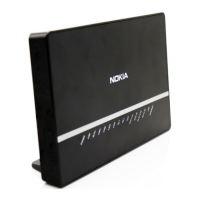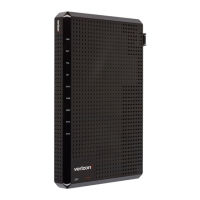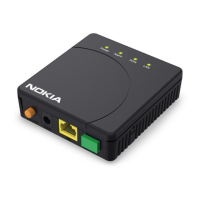FD 100/320Gbps NT and FX NT IHub Services Guide Virtual Private LAN Service
Issue: 13 3HH-11985-AAAA-TQZZA 229
Assuming that VE-ID=10 is configured in another PE4 the following procedures
applies:
• PE4 sends BGP Update with the new VE-ID in the network that will be received
by all the other participating PEs, including PE1.
• PE1 upon reception will generate another label block of 8 labels for the VBO = 9.
For example the initial PE will create now new pseudowire signaling information
of (VBO = 9, VBS = 8, LB = 3000) and insert it in a new NLRI and BGP Update
that is sent in the network.
• This new NLRI will be used by the VE-ID from 9 to 16 to establish pseudowires
back to the originator PE1. For example PE4 with VE-ID 10 will use pseudowire
label 3001 to send VPLS traffic back to PE1.
• The PEs owning the set of VE-IDs from 1 to 8 will ignore this NLRI.
In addition to the pseudowire label information, the “Layer2 Info Extended
Community” attribute must be included in the BGP Update for BGP VPLS to signal
the attributes of all the pseudowires that converge towards the originator VPLS PE.
The format is described in Table 112.
Table 112 Layer2 Info Extended Community
The meaning of the fields is as follows:
• Extended community type
The value allocated by IANA for this attribute is 0x800A.
• Encaps Type
Encapsulation Type; identifies the type of pseudowire encapsulation. The only
value used by BGP VPLS is 19 (13 in HEX). This value identifies the
encapsulation to be used for pseudowire instantiated through BGP Signaling
which is the same as the one used for Ethernet pseudowire type in regular VPLS.
There is no support for an equivalent Ethernet VLAN pseudowire in BGP VPLS in
BGP Signaling. Still it is desirable to check the pseudowire-template vc-type to
identify what kind of pseudowire is really to be used. While vc-type ether should
be the default for interoperability with JNPR, it is desired to still have the vc-type
vlan option to allow for the QoS transparency features.
• Control Flags
Control information regarding the pseudowires. Described in detail ithe below
segment.
Extended community type (2 octets)
Encaps Type (1 octet)
Control Flags (1 octet)
Layer-2 MTU (2 octets)
Reserved (2 octets)

